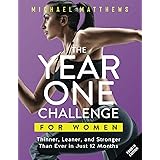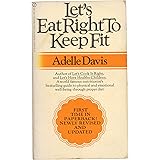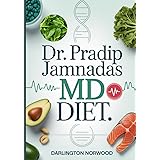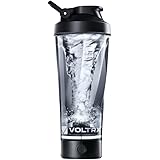Mastering the Best Weight Loss Diet Plan for Women: A Sustainable Approach
Finding the right weight loss diet plan for women, especially for busy moms and working professionals, can feel like an uphill battle. Many traditional diets are overly restrictive and ultimately unsustainable. The key to lasting results lies in a strategy that is simple, effective, and perfectly integrated into your daily life. This article, building on the valuable insights from the video above, will guide you through a comprehensive and sustainable approach to weight loss, focusing on whole foods, proper portions, mindful timing, and essential lifestyle habits.
1. Identify Your Core Healthy Foods
A foundational principle for any effective weight loss diet plan for women is to select foods that are both nourishing and enjoyable. Restrictive eating patterns often lead to cravings and eventual abandonment of the diet. The focus should be on building a diet around four primary categories of high-quality foods that you genuinely love to eat.
Proteins: The Building Blocks
Protein is essential for muscle maintenance, satiety, and metabolic function. A wide variety of sources can be incorporated to meet individual preferences and dietary needs. For example, lean options like organic chicken breast, grass-fed ground beef, and wild-caught salmon are excellent choices. For those seeking plant-based alternatives, chickpeas, lentils, tofu, tempeh, and a quality plant-based protein powder offer substantial protein. Eggs, particularly pasture-raised, are also a versatile and nutrient-dense option. Identifying two to three go-to protein sources that you can easily prepare in bulk will significantly simplify meal planning throughout the week.
Healthy Carbs: Fuel for Your Body
Contrary to popular belief, carbohydrates are not the enemy of weight loss. The right kinds of carbs, particularly complex carbohydrates, provide sustained energy and essential fiber. Processed sugars and refined grains are best minimized, but nutrient-rich options can and should be included. Examples include sweet potatoes, brown rice, quinoa, oats, and sprouted grain breads like Ezekiel bread. Fruits such as organic berries, apples, and bananas are also excellent sources of healthy carbs. These foods can be enjoyed while still achieving significant weight loss, as evidenced by women in programs who successfully lose over 50 pounds while incorporating such items daily.
Healthy Fats: Fullness and Function
Healthy fats are crucial for hormone regulation, nutrient absorption, reducing inflammation, and promoting satiety. They help you feel full longer, preventing unnecessary snacking and cravings. Excellent sources include avocados, extra virgin olive oil, nuts (like almonds, walnuts, macadamia nuts), and seeds (chia, flax, hemp). The healthy fats found in pasture-raised eggs also contribute to overall well-being. Selecting a few favorite healthy fat sources and incorporating them into meals and snacks is an effective strategy for feeling satisfied.
Veggies: Nutrient Powerhouses
Vegetables are often overlooked but are incredibly vital for weight loss due to their high fiber and nutrient content and low-calorie density. They fill you up without adding excessive calories, making them perfect for volume eating. Green leafy vegetables like spinach, kale, and Swiss chard, along with broccoli, zucchini, bell peppers, and asparagus, are highly beneficial. It is often recommended that you choose two to three vegetables that you truly enjoy, which makes consistent consumption much more feasible.
2. Master the Perfect Plate Framework for Portion Control
Once your preferred healthy foods are identified, the next step is to master proper portioning without the need for meticulous calorie counting. The “Perfect Plate” framework offers a straightforward visual guide to assembling balanced meals that naturally control calorie intake and provide essential nutrients. This method has been developed and proven across thousands of successful weight loss journeys.
A Perfect Plate is typically structured as follows: half of the plate is filled with your chosen non-starchy vegetables, a quarter with your go-to proteins, and the remaining quarter with healthy carbohydrates. Healthy fats are then sprinkled throughout the meal. This balanced approach ensures that fiber, protein, and healthy fats work together to keep you full and satisfied. Each perfect plate typically contains between 350 to 600 calories, depending on the specific ingredients and exact portions. For example, an average woman aiming for weight loss might target 2,000-2,500 calories per day. Consuming three perfect plates at 600 calories each keeps the total intake well below the 2,000-calorie mark, leading to consistent weight loss without feeling deprived.
Consider an omnivore perfect plate example: a base of mixed greens and zucchini, topped with a baked chicken breast, a side of black beans (as a healthy carb) mixed with a dash of olive oil, and sliced avocado for healthy fats. Alternatively, a vegetarian perfect plate might include a large spring mix salad with extra virgin olive oil, a chickpea-based burger, a portion of black rice, and a generous dollop of hummus for healthy fats. These meals are not only nutritious but are also designed to be quick and easy to assemble, especially with pre-prepped ingredients.
3. Optimize Your Meal Timing Schedule
The timing of meals can significantly impact energy levels, hunger, and overall weight loss success. There are various effective meal timing strategies, and the most beneficial one is often determined by individual lifestyle and preferences. The goal is to establish a schedule that is sustainable and aligns with your natural hunger cues.
The 4×4 Meal Plan: Consistent Nourishment
The “4×4 meal plan” involves consuming a perfect plate approximately every four hours, totaling four meals per day. A typical schedule might include breakfast around 8 AM, lunch at noon, a mini-meal or snack around 3 PM, and dinner between 7 PM and 8 PM. This structured approach helps maintain stable blood sugar levels, prevents extreme hunger, and ensures a steady supply of nutrients throughout the day. For busy women, the first meal can easily be a nutrient-dense shake made with quality protein powder, chia seeds, hemp seeds, and organic almond milk, providing about 350 calories and keeping you full until lunch.
Intermittent Fasting: A Flexible Approach
For those who are not hungry in the morning or prefer a shorter eating window, intermittent fasting can be a highly effective strategy. This approach typically involves skipping breakfast and having the first meal around noon. The eating window might then extend to an afternoon snack around 3:30 PM and dinner between 7 PM and 8 PM. By compressing the eating window, the body has more time to process food and potentially enhance fat burning. Both the 4×4 and intermittent fasting models are proven to support weight loss when combined with the Perfect Plate framework and nutritious food choices.
4. Prioritize Hydration for Enhanced Weight Loss
Proper hydration is a critical, yet often underestimated, component of a successful weight loss diet plan for women. Water plays a vital role in metabolic processes, nutrient transport, and appetite regulation. Staying adequately hydrated can significantly curb cravings and increase feelings of fullness, preventing unnecessary calorie intake.
A practical method for calculating your daily water intake is to take your body weight in pounds, divide it by two, and then add 32 ounces. For example, a 200-pound woman would aim for 132 ounces of water daily. This may seem like a large amount, but intentional hydration supports satiety and energy levels. Many individuals who experience headaches or energy dips are simply dehydrated, making water intake a simple fix for immediate improvements.
A highly recommended habit is to consume 20-32 ounces of water first thing in the morning, immediately upon waking. Adding a pinch of pink Himalayan sea salt to this water provides around 83 different trace minerals, acting as a powerful rehydration boost that your body needs after hours of sleep. Throughout the day, carrying a high-quality, non-plastic water bottle (ideally 32 ounces) serves as a constant reminder to drink. Most women find that drinking three to five such bottles daily helps meet their target. Furthermore, unsweetened green tea can be brewed in bulk and consumed throughout the day, offering metabolic benefits and a gentle caffeine boost without added sugars. Limiting beverages to water, unsweetened tea, and black coffee (WTC) is paramount, as many popular drinks, especially from coffee shops, contain exorbitant amounts of hidden sugars, sometimes equivalent to multiple donuts in a single serving.
5. Optimize Sleep for Metabolic Health
Sleep is not merely a period of rest; it is a vital component of metabolic health and a non-negotiable aspect of any effective weight loss diet plan for women. Aiming for at least seven quality hours of sleep per night is crucial. When the body is sleep-deprived, it tends to lose muscle mass rather than fat, and fat loss becomes significantly more resistant. This means that even with perfect diet and exercise, insufficient sleep can undermine your efforts.
Research indicates that sleep deprivation leads to insulin resistance. This condition causes carbohydrates to be processed inefficiently, leading to higher and prolonged insulin levels, which signals the body to store fat rather than burn it. Moreover, poor sleep impacts hunger hormones like ghrelin and leptin, often increasing appetite and cravings for high-calorie foods. Prioritizing sleep not only enhances fat loss but also boosts energy levels, making it easier to engage in physical activity and maintain overall well-being. Improving sleep quality from the outset can dramatically improve energy and metabolic function.
6. Incorporate Strategic Supplements
While often marketed as quick fixes, the most effective supplements for weight loss are generally those that support overall health and optimize bodily functions, rather than specific “fat burners.” For women, a targeted approach to supplementation can fill nutritional gaps and enhance the body’s natural processes.
1. **Quality Probiotic Supplement:** The gut microbiome plays a profound role in weight management and overall health. A healthy balance of gut bacteria can influence metabolism, nutrient absorption, and even mood. Studies highlight the direct link between gut health and weight, showing that rebalancing gut flora with probiotics can lead to automatic weight loss. Probiotics are considered a core supplement for women’s health and weight loss. 2. **Vitamin D3:** Essential for hormone regulation, immune function, and bone health, Vitamin D3 is a foundational supplement. Many women are deficient, and optimal levels are often associated with better weight management and reduced inflammation. Getting some daily sunlight also aids in natural vitamin D production. 3. **High-Quality Fish Oil:** Rich in Omega-3 fatty acids, fish oil helps reduce inflammation, supports cardiovascular health, and can play a role in fat metabolism. It is considered an important supplement for overall cellular health. 4. **Turmeric or Curcumin Supplement:** These compounds are known for their powerful anti-inflammatory properties. Reducing chronic inflammation in the body can positively impact metabolic function and aid in weight loss efforts. These are crucial for a well-rounded supplement regimen.
Ultimately, a successful weight loss diet plan for women is built upon establishing sustainable habits and consistent routines. By identifying healthy, enjoyable foods, utilizing the Perfect Plate framework, optimizing meal timing, prioritizing hydration, ensuring adequate sleep, and supplementing strategically, women can achieve lasting weight loss and improve their overall health. These foundations are often more impactful than any temporary diet fix, setting the stage for long-term well-being and vitality. Further detailed guidance, including meal plans and workout routines, can be found in structured programs designed for women’s health and fitness.











